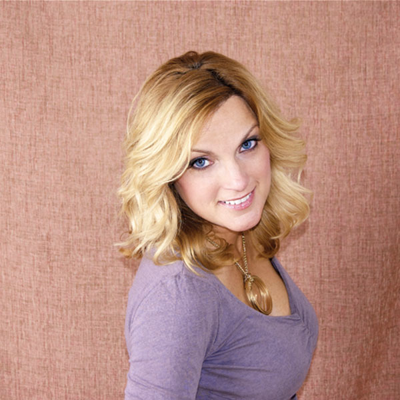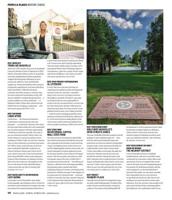There was plenty of well-deserved hoopla surrounding the Grand Ole Opry's 85th anniversary celebration last week, but the Opry wasn't the only Nashville-based country music variety show celebrating a birthday this month. It wasn't even the only one to have started out on WSM 650-AM, although it's the only one there now. Music City Roots, the brainchild of local admen, music enthusiasts and self-described "corporate radio ex-pats" Todd Mayo and John Walker, launched in October 2009, and spent its first season of live broadcasts on the big WSM tower and streaming online at the station's website.
When the show's contract came up for renewal and Gaylord Entertainment basically told the duo to either sell out or get out, they didn't hesitate for a moment — and giving up even partial ownership just wasn't in the cards. So on Oct. 20, when Music City Roots returns with a lineup celebrating the latest release from bluegrass star Rhonda Vincent, it won't be airing on the fabled AM giant — look for it instead on WRLT-FM, Lightning 100.
Right from the start, its inspired lineups, engaging pace and diverse local sponsorships have had a distinctive flavor that would be hard to maintain under the control of anyone other than Mayo, Walker and the team they've assembled, which includes Laurie Dashper — "her job description is to show love to the artists," Mayo says — interviewer/blogger Craig Havighurst, emcee Jim Lauderdale, announcer Keith Bilbrey (who replaces WSM's Eddie Stubbs) and video director Jim Yockey.
"The idea was kindled by the belief we shared as music fans and citizens of Nashville that there could be a new presentation of the variety of good music that comes under the Americana tent," Mayo says. "We already had a year of experience doing Bluegrass Underground at the Cumberland Caverns, so we had a relationship with WSM, but the logistics of the cave aren't too good for presenting more than one or two artists. And right when we were just starting to put this idea together, we went out to the opening of the [Loveless] Barn and saw the SteelDrivers and Donna the Buffalo there, and after that, we never really considered another venue. We know what a tough town this can be for live music, and we knew there was a potential negative to being out in Bellevue — but really, we kind of liked that we're out on the edge of Music City, as a metaphor and as a literal place."
Fans drawn by a particular week's lineup supplement a core audience that trusts the team to serve up a satisfying combination of familiar and unfamiliar names in a setting that smartly but lovingly updates the old barn-dance format for the 21st century. That's a balancing act that requires dexterity in multiple dimensions — from lining up sponsors to recruiting just the right mix of acts — but after a year's worth of shows, it's safe to say that the MCR team has the equilibrium of a troupe of world-class acrobats.
Out front, it's easy to see the show's appeal: four or five (or occasionally six) artists across a couple of hours means that there's plenty of variety, yet room for each act to build some pacing into their set. Interview segments allow Havighurst to dig into each artist's background and outlook, but also gives stagehands time to get set-ups right without the threat of radio dead air, while Lauderdale's inspired emcee work glides over any hitches.
If you're even a casual follower of bluegrass or Americana, you'll see a familiar name or two — Emmylou Harris, Sam Bush, John Cowan, Dale Watson, Elizabeth Cook — and a couple of likely unfamiliar ones, mostly from these parts, and a couple of surprising ones every now and then, too, like Gary Morris. There's fried chicken if you want it, a modest bar and artist and sponsor tables to check out. "There are several nights where I look around," says Mayo, "and I see old folks, young folks, people sitting up paying rapt attention, people hanging back and having a beer or having a conversation, music industry people ... you look at it and you feel like, man, this is Music City."
That's an atmosphere that not only draws folks to the Barn, but translates well to radio — and, no less importantly, to streaming Internet video. "What the crowd there does is give energy to the show," Mayo says. "Ultimately our goal is to distribute this as a content play. We've been looking at radio syndication for a while, and now we've kind of backed into the video side — we had Jim Yockey, who's a great director, and it wasn't a matter of having a business plan, it was a matter of what seemed cool."
Adding to that, Walker says, "We want to explore every avenue of distribution that's available, while adhering to the old-school values that the broadcasters of old brought to building Nashville as Music City in the first place."
Still, if there's a secret ingredient to the show's success, it just might be the atmosphere that Dashper creates behind the scenes each week. The promotional value would be enough to draw most artists anyhow, but the fact is that backstage at Music City Roots has quickly gained a reputation as an epic hang, and the easy interchange among musicians there makes even the Grand Ole Opry look a bit formal and distant. "When you have an emerging artist," she says, "inevitably one of the other three acts is one of their heroes, and they look at me like, 'I can't believe I'm on the same stage.' ... It's just great to watch phone numbers being exchanged and writing appointments being made back there."
"Any time we have a decision to make," Mayo adds, "we always ask ourselves, what's the best thing for the music? We always close with what we call the Loveless Jam, where everyone gets onstage, and sometimes that runs long. Eddie Stubbs would always say, 'You know, Todd, at the Opry we call that a trainwreck.' And we say, 'Well, at Music City Roots, we call it magic.' "
Email music@nashvillescene.com.





